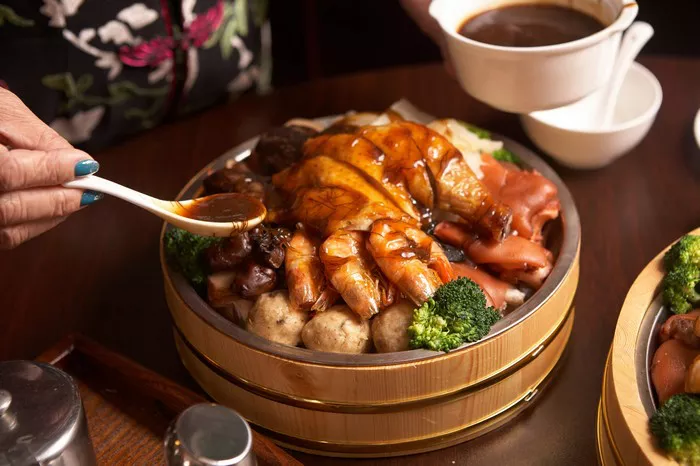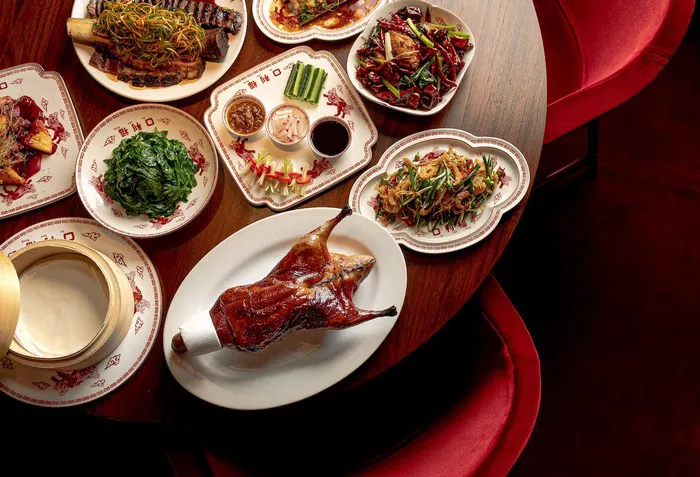As spring blooms and the world awakens from the slumber of winter, a time-honored culinary tradition takes center stage on dining tables across the globe: the classic Easter dinner. Easter, a holiday celebrated by Christians to commemorate the resurrection of Jesus Christ, is not only a spiritual event but also a time for families to gather, share stories, and enjoy a lavish feast together. At the heart of this celebration lies a rich tapestry of cultural and culinary traditions that come together to create the quintessential Easter dinner experience.
The Significance of Easter Dinner
Easter dinner holds a special place in the hearts of many, as it’s more than just a meal – it’s a reflection of cultural heritage, familial bonds, and the joys of spring’s arrival. The tradition of sharing a festive meal on Easter Sunday dates back centuries and has evolved over time to encompass a wide array of culinary delights.
The Iconic Main Course: Roast Lamb
Central to the classic Easter dinner is the main course, often gracing the table with its succulent aroma and tender flavor: roast lamb. This dish is steeped in symbolism, drawing parallels between the lamb and Jesus Christ as the “Lamb of God.” The tender meat, roasted to perfection, is a testament to the festive spirit of the occasion and the bounties of nature. The preparation of the lamb may vary across cultures – from Mediterranean-style roasted leg of lamb seasoned with rosemary and garlic to Greek-style lamb with lemon and oregano – but the sentiment remains the same: a celebratory dish that brings loved ones together.
A Symphony of Sides: Complementing the Feast
No classic Easter dinner is complete without an array of delectable side dishes that enhance the flavors of the main course and provide a wholesome dining experience. Some beloved choices include:
1. Spring Vegetables: As Easter coincides with the arrival of spring, tables are adorned with vibrant, seasonal vegetables. From buttery asparagus spears to glazed baby carrots and peas, these vegetables symbolize the renewal of life and the transition from the cold grasp of winter to the warmth of spring.
2. Potatoes: Whether mashed, roasted, or au gratin, potatoes hold a cherished spot on the Easter dinner menu. Their hearty and comforting nature adds substance to the meal, creating a harmonious balance with the lighter spring elements.
3. Deviled Eggs: These bite-sized delights are a nostalgic nod to the past and a playful addition to the spread. Hard-boiled eggs are halved and filled with a creamy mixture of egg yolks, mayonnaise, and seasonings, creating a delightful appetizer that is as visually appealing as it is flavorful.
4. Hot Cross Buns: These sweet, spiced buns are a staple of many Easter celebrations. Adorned with a distinctive cross on top, these buns carry both religious symbolism and a touch of indulgence, often enjoyed as a prelude to the main course.
5. Gravy and Sauces: To elevate the flavors of the roast lamb and other dishes, rich gravies and sauces are often introduced. These savory accompaniments infuse the meal with depth and enhance the overall dining experience.
6. Salad: A fresh, crisp salad provides a refreshing contrast to the heartier elements of the Easter dinner. Mixed greens, fresh herbs, and seasonal fruits can come together in a colorful and light dish, bringing balance to the table.
A Sweet Conclusion: Desserts to Savor
Easter dinner extends its culinary charm to the dessert table, where a variety of sweet treats await eager diners. These desserts are crafted with care, embodying the essence of the holiday’s joyful spirit.
1. Easter Egg-inspired Treats: From elaborately decorated chocolate eggs to intricately designed sugar confections, Easter eggs take on a new dimension as edible works of art. These treats serve as a testament to the creativity and craftsmanship that go into preparing the perfect Easter dessert.
2. Simnel Cake: A traditional British fruitcake adorned with marzipan, Simnel cake has been a fixture of Easter celebrations for centuries. Its 11 marzipan balls symbolize the 12 apostles (excluding Judas), and its rich fruit flavors evoke a sense of nostalgia and comfort.
3. Pastries and Tarts: Easter offers a prime opportunity to indulge in a variety of pastries and tarts, often filled with fruits, creams, or custards. These delicate creations tantalize the palate and provide a delightful conclusion to the feast.
4. Lamb-shaped Cake: Building on the symbolism of the lamb in Easter traditions, a lamb-shaped cake can take center stage as a charming and delicious dessert. This confectionary delight captures the essence of the holiday’s significance while appealing to the inner child in all of us.
5. Fresh Fruit Platter: For those seeking a lighter, healthier option, a beautifully arranged platter of fresh fruits provides a refreshing and vibrant conclusion to the meal. The colors and flavors of the fruits resonate with the themes of rebirth and growth that Easter embodies.
Beverage Bliss: Pairing with Perfection
No Easter dinner is complete without a thoughtfully chosen selection of beverages to complement the culinary delights on offer. From sparkling wines to fresh fruit juices, the right drinks can enhance the flavors and overall dining experience.
1. Sparkling Wines: Champagne, Prosecco, or other sparkling wines add an air of sophistication and celebration to the meal. Their effervescence cleanses the palate and complements a wide range of flavors.
2. Fruit Juices: Freshly squeezed fruit juices, such as orange, grapefruit, or berry blends, offer a vibrant and refreshing option for non-alcoholic drinkers. These juices can be enjoyed as standalone beverages or used as mixers in mocktails.
3. Herbal Teas: After a hearty meal, herbal teas provide a soothing and comforting way to unwind. Mint, chamomile, or a blend of various herbs can aid digestion and create a cozy atmosphere.
Preserving Tradition: Passing Down the Legacy
As the years pass, the classic Easter dinner remains a steadfast tradition that transcends cultural boundaries and generations. Families gather around the table, each dish carrying not only flavors but also stories of ancestors and shared experiences. The act of preparing and sharing a meal together becomes a powerful medium for passing down cherished traditions and values.
Incorporating Personal Touches
While the classic Easter dinner maintains its core elements, modern times have ushered in creative reinterpretations that cater to diverse tastes and dietary preferences. From plant-based roasts for vegetarians to innovative twists on traditional desserts, these adaptations ensure that everyone can partake in the joyous celebration.
1. Plant-Based Options: As plant-based diets gain traction, many families are incorporating meatless alternatives into their Easter dinner menus. Roasted vegetables, nut roasts, and plant-based protein dishes provide a hearty and delicious alternative to the traditional roast lamb.
2. Global Influences: In our interconnected world, families often merge diverse cultural backgrounds. This fusion of traditions can lead to unique Easter dinners that feature a medley of flavors and dishes from various cuisines, reflecting the multifaceted nature of modern families.
3. Health-Conscious Choices: Health-conscious individuals can enjoy Easter dinner without compromising their dietary goals. Lighter versions of traditional dishes, such as using olive oil instead of butter, or opting for whole-grain versions of bread and pastries, offer a healthier twist on classic favorites.
4. Culinary Creativity: For those with a flair for experimentation, culinary creativity knows no bounds. Infusing traditional dishes with new flavors, experimenting with innovative cooking techniques, and incorporating seasonal ingredients can result in an Easter dinner that is both rooted in tradition and uniquely inventive.
Conclusion
In a world of fast-paced changes, the classic Easter dinner stands as a testament to the power of tradition, the importance of family, and the joy of sharing a meal together. As loved ones gather around the table, the aroma of roast lamb mingles with the laughter and stories that flow freely. The carefully crafted dishes not only tantalize taste buds but also connect generations and cultures, carrying forward the legacy of a timeless celebration. Whether steeped in religious significance or embraced as a cultural practice, the classic Easter dinner remains a cherished occasion that embodies the essence of spring’s renewal and the warmth of human connection.



























